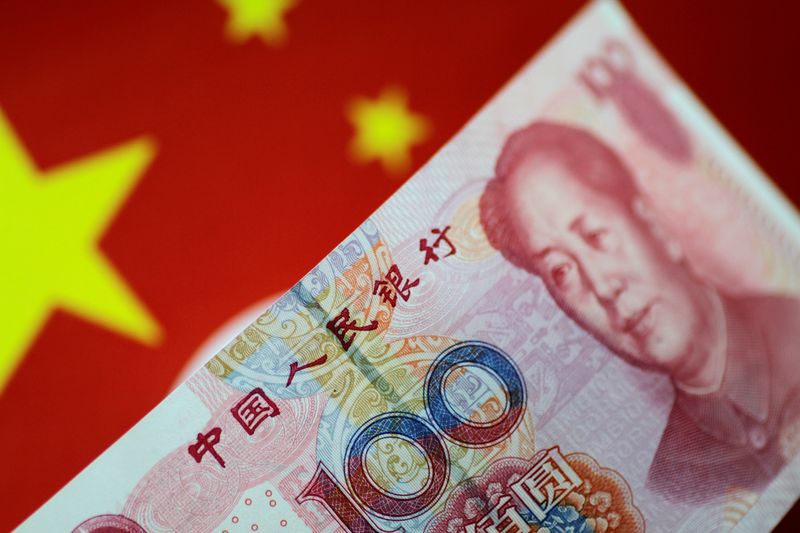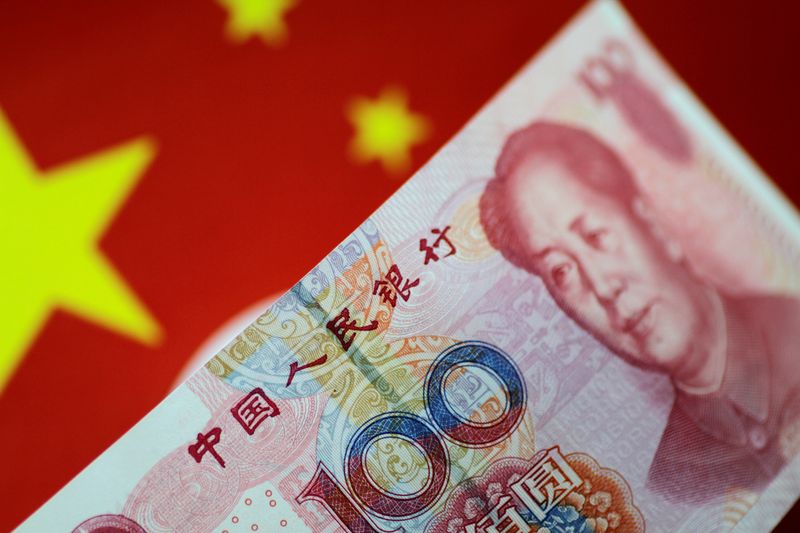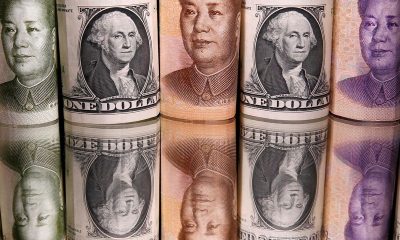Forex
Column-Asian FX at crossroads as yen, yuan diverge: McGeever

By Jamie McGeever
ORLANDO, Florida (Reuters) – Japanese and Chinese monetary policy is diverging, meaning other Asian currencies may now also be at a crossroads.
Do currencies, such as the South Korean won, Indian rupee and Indonesian rupiah take their cue from a firming yen being supported by expectations of policy tightening from the Bank of Japan, or from a depreciating yuan being weighed down by the People’s Bank of China’s need to ease policy to stimulate a struggling economy?
Until recently, the yen and yuan had been joined at the hip, with both under heavy selling pressure as a relentless ‘higher for longer’ Fed outlook caused the U.S. dollar to rally. But that relationship and U.S. rate expectations have both shifted.
Between late April and mid-July, the simple 30-day rolling correlation between the yen and yuan steadily strengthened to its most positive level in 10 months. But it has subsequently reversed.
This is largely because the PBOC surprised markets last week by cutting key interest rates. And this week the yuan, which is tightly controlled by the central bank, was fixed at the weakest level against the dollar this year. Meanwhile, Chinese bond yields are at record lows, and pressure on the exchange rate is firmly to the downside.
The yen, meanwhile, has jumped some 8% from its recent 38-year low against the dollar. The BOJ followed up March’s historic rate hike – the first in 17 years – with a larger-than-expected increase on Wednesday and signaled its commitment to end its decades-long use of ultra-loose policy.
Of course, around $100 billion of yen-buying intervention from Tokyo in the last few months has put a floor under the currency, and the BOJ’s approach to raising rates is hardly gung-ho. So the yen is not a sure-fire bet to strengthen aggressively from here.
But the policy divergence with China is clear, and it’s muddying the waters for other Asian currencies.
From China’s mini-devaluation in 2015 to the beginning of the Federal Reserve’s recent rate-hiking cycle, every Asian currency was more sensitive to dollar/yuan than dollar/yen, especially the won, rupiah, Malaysian ringgit and Taiwanese dollar. Even India’s rupee, the Asian currency least influenced by the yuan, was still three times more sensitive to moves in China’s currency than Japan’s.
However, once the Fed started tightening policy in 2022, Asian currencies began to be led mostly by the extraordinary rise in dollar/yen. According to analysts at Goldman Sachs, longer-term correlations show that the yen’s influence on Asian currencies surged dramatically when U.S. rates started rising.
But that correlation has faded since the Fed stopped hiking a year ago.
“As such, the broad USD and matters more for Asian FX than ,” they wrote in a recent report.
So if the yuan stays weak, Asian currencies could remain on the soft side even as a Fed easing cycle weighs on the dollar. That’s probably not bad news – given China’s economic struggles and the likely slowdown in U.S. growth, Asian capitals may welcome weaker exchange rates more than they fear the inflationary consequences.
Beijing likely won’t be too upset if the yuan and yen diverge.
Since the onset of the pandemic in March 2020, Japan’s currency has depreciated around 30% against the yuan. Or to put it another way, on a simplistic exchange rate basis, Japanese goods became 30% cheaper over that time compared with equivalent Chinese goods on the international market.
Meanwhile, China is also facing the specter of an intensifying trade dispute with the U.S. The trade war between the two countries during Donald Trump’s presidency was followed by protectionist policies of President Joe Biden’s administration, and the dark cloud of much heavier U.S. tariffs after November’s election is looming.
This has all had the expected impact: U.S. imports from China as a share of its total imports fell by 8% over the 2017-2023 period, according to Oxford Economics. However, the share of U.S. imports from Europe, Mexico, Vietnam, Taiwan and South Korea rose. Meanwhile, these countries – especially Vietnam – all saw imports from China rise as a share of their total imports over the same period.

Beijing will want to ensure that any deterioration in bilateral U.S.-China trade continues to be made up for elsewhere. A weaker yuan, relative to its main regional rival the yen, might help.
(The opinions expressed here are those of the author, a columnist for Reuters.)
(By Jamie McGeever; Editing by Tomasz Janowski)

 Forex3 years ago
Forex3 years agoForex Today: the dollar is gaining strength amid gloomy sentiment at the start of the Fed’s week

 Forex3 years ago
Forex3 years agoUnbiased review of Pocket Option broker

 Forex3 years ago
Forex3 years agoDollar to pound sterling exchange rate today: Pound plummeted to its lowest since 1985

 Forex3 years ago
Forex3 years agoHow is the Australian dollar doing today?

 Cryptocurrency3 years ago
Cryptocurrency3 years agoWhat happened in the crypto market – current events today

 World3 years ago
World3 years agoWhy are modern video games an art form?

 Commodities3 years ago
Commodities3 years agoCopper continues to fall in price on expectations of lower demand in China

 Economy3 years ago
Economy3 years agoCrude oil tankers double in price due to EU anti-Russian sanctions


























